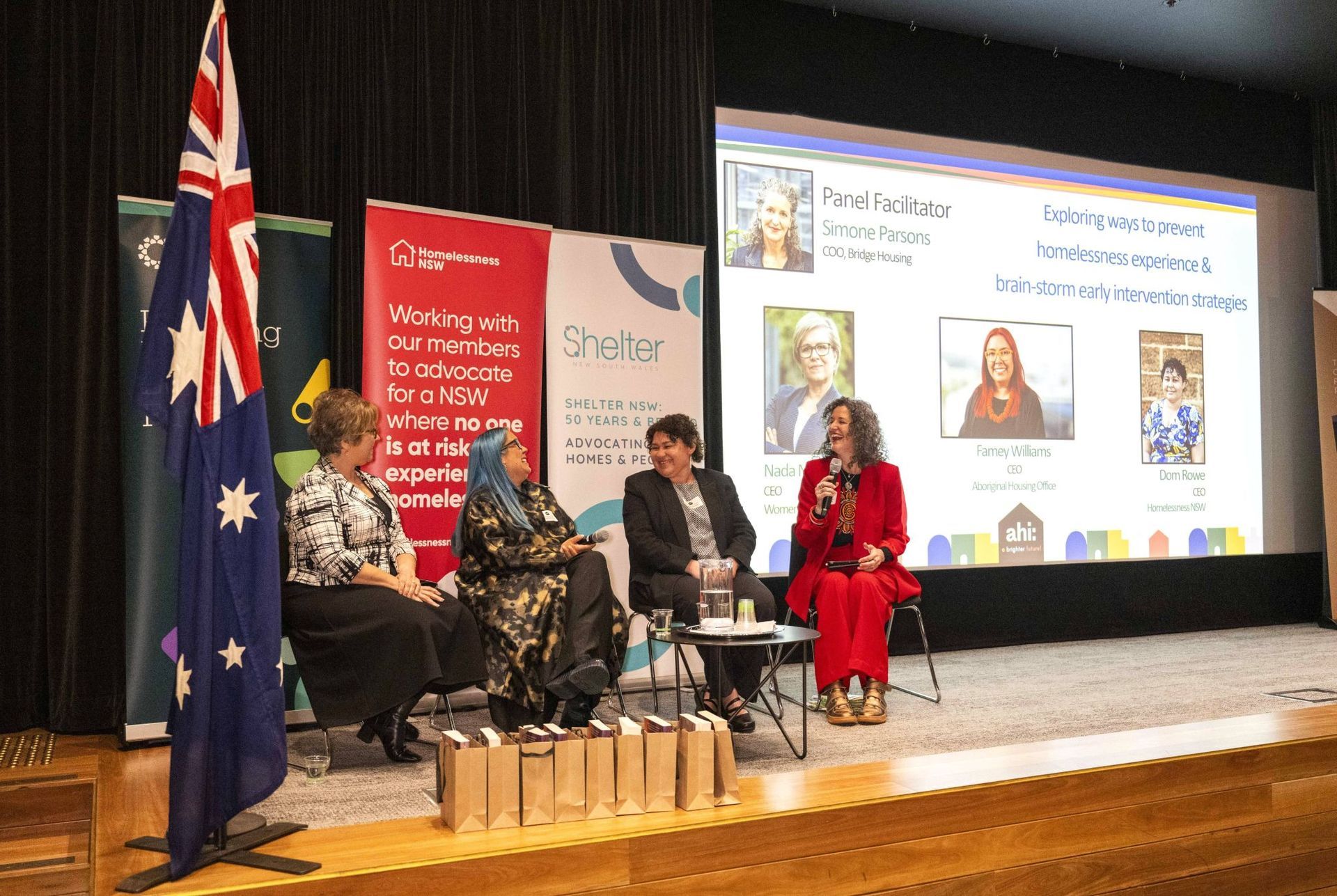Dr. Jed Donoghue from The Salvation Army Tasmania opens the door on an approach for removing the barriers to services for people in housing distress.
Federal and state government policies determine the level of investment in social housing, the nature of the taxation system and levels of income support, which in turn influence inequality in Australia. These issues form the structural background to homelessness in Australia.
Low levels of investment and equalisation create conditions where it is more likely that a growing number of people will fall into poverty and homelessness (as has been happening over the last decade), and that those people will also find it harder to accumulate the resources and assistance required to escape it. The areas of concern are:
- Over the four years prior to 2019, expenditure on homelessness services rose by 27 percent. Meanwhile, social housing expenditure increased by just 4 percent. Over this period, Australia’s population increased, on average, by 1.4 percent per year – higher than the social housing investment.
- Social security system changes, such as shifting welfare benefit recipients onto lower payments with more conditions of eligibility, and the increased “sanctioning” of claimants.
- Incremental long-term impacts of inadequate welfare indexation, which have increasingly eroded the ability of lower-income Australians to afford decent housing.
- Criminal justice policies that are increasing the prison population, which leads to a rising rate of prison discharge – a moment when the risk of homelessness is high.
"Under-investment in social housing supply, affordability issues in the private rental market, and a lack of housing and homelessness policies at the federal government level have been key structural contributors to homelessness over the past decade."
Under-investment in social housing supply, affordability issues in the private rental market, and a lack of housing and homelessness policies at the federal government level have been key structural contributors to homelessness over the past decade. The addition of these stressors compounds difficulties in accessing and maintaining tenancies for people and makes the work of the homeless and social housing sectors more difficult in resolving homelessness.
It is imperative that service systems consider these issues strategically to support clients to access secure and affordable tenancies.
So, what exactly is a ‘No Wrong Door’ approach?
A ‘No Wrong Door’ (NWD) approach attempts to remove barriers to services, and clarify the process and standards expected of services. NWD responses intentionally assist people to connect with the most appropriate service for them, no matter what service that may be.
We do this by developing and maintaining:
- Strong internal and external referral pathways, partnerships and agreements to better facilitate the involvement of others (agencies, sectors) in the care of the people we serve, where the goal of service cannot be achieved at the service to which a person has connected;
- A service focus on understanding and updating our knowledge of the services and systems environment across sectors, current research and evidence-based practices and innovations; and
- A holistic service model that includes a community support focus, understanding that facilitating links to community, faith, family, and friends supports recovery and wellbeing.
We acknowledge that adopting NWD as a foundation of care provides an often-essential element to service provision, above and beyond the strict commitments of a community service agreement, grant or contract. In so doing, we aim to provide a timely, flexible and streamlined response to better assist people towards recovery, housing and wellbeing.
The essential ingredients for a No Wrong Door approach are:
- A more client-centered approach to service provision;
- Service user involvement in program design and development;
- Respectful engagement with clients by all homelessness staff;
- Greater visibility of homelessness services in the community;
- Better integration and coordination with mainstream services;
- Easy to understand eligibility criteria, particularly for those with complex needs;
- Use of system-wide and simplified intake, assessment and referral documents and processes;
- More flexible and responsive service models that meet client needs;
- Annual reviews of client satisfaction with service provision;
- Provision of basic amenities to clients such as access to bathroom, kitchen, tea and coffee.
Resources and capacity
The private rental housing market currently provides very few options for individuals on a low income and the vacancy rate is low. There is an increased demand for affordable and secure social housing with national social housing waiting lists hovering just below 200,000 households.
Specialist homeless and social housing services are required to meet the needs of clients within the limited resources available to their service. This constraint requires service providers to be accountable, responsive and targeted.
There are three key elements to managing the demand for social housing and support:
- Worker capacity;
- Client demand; and
- Managing the expectations.
As client demand increases, worker capacity decreases. The result is often a change in the service response:
- The worker provides reduced support and assistance;
- The worker provides inconsistent or generic telephone support;
- The work is more time-limited, but the client needs may be ongoing;
- There is a reduced capacity to achieve service obligations and client outcomes;
- The increased workload can also quickly turn into a workplace health and safety risk.
To manage expectations, a No Wrong Door approach aims to ensure:
- Support and assistance are delivered within the capacity of the workers;
- There is clarity for clients about the role of support and tenancy workers;
- There is clarity in terms of what services they can really provide;
- A reliable and consistent standard of service delivery is achieved;
- The service operates within the resources available and is sustainable.
Accessibility
Housing and homeless services should be accessible to the people who use them, and those services should be tailored to fit individuals to the degree they are required and requested. Organisations need to creatively and flexibly work with people accessing our services to overcome barriers to effectively support people, whether these be physical, emotional, health-related or time-limited.
We can do this by:
- Establishing an open, transparent and honest relationship with those we serve, setting realistic expectations, establishing roles and responsibilities, and seeking an informed consent when working with others to respond to presenting needs;
- Screening for vulnerability and prioritisation of services, allowing for rapid response to acute, chronic or high-risk issues;
- Applying assessment practices that are consistent and comprehensive, and identifying an appropriate service response to the situation
- Responding with respectful adjustment to any presenting impairment, whether related to physical, mobility, emotional, cognitive or other health state;
- Providing an environment that is culturally respectful, family-friendly, child-safe;
- Designing services that meet people where they are, including assertive outreach responses in the community, as well as a suite of engagement and other services to support people in residential settings;
- Building in step-up/step-down service capacity as the intensity of support to people changes over time and circumstances;
- Providing clear communication in a variety of styles, languages and delivery modes;
- Engaging in strategies to promote services with clear information on eligibility, aims and methods, and with an emphasis on providing information to minority and key vulnerable groups who are over-represented in experiencing homelessness;
- Living the principles of dignity, independence, and equal opportunity.
Service provision
Higher staff caseloads result in less comprehensive service offerings. Lower caseloads and increased capacity result in more comprehensive service provision.
A caseload for a full-time equivalent (FTE), depending on client mix (medium to high needs), of 12 to 15 clients, allows workers to provide case management and casework that includes use of the Outcomes Measurement tools such as Outcome Star. On this basis, we aim for all FTE workers to have a maximum caseload of 15 people. Regular support plan reviews evaluate overall progress while on caseload.
All clients that are ‘active’ will be entered into a ‘software system’ and allocated to a key worker. Those clients who have demonstrated capacity, have met forward plan goals but still require support, are moved to team management. Clients with capacity to achieve their goals with brief intervention, information/advice and other minimal casework are allocated to team management. This makes resources available for allocation of key workers to clients from the team-managed list that have been assessed as requiring more comprehensive support.
Transfer between key worker and team management is subject to a continual step-up/step-down approach, in recognition of changing support needs over time.
Drawing conclusions
Many people in the community sector believe that access to safe and affordable housing is a basic human right, enshrined in the United Nations Declaration of Human Rights, and we are committed to defending this right through:
- Walking alongside the people we serve to provide direct assistance to access and maintain safe and affordable tenancies;
- Advocacy to governments, service systems, and community and private accommodation providers to uphold the rights of all persons to safe and affordable housing.
The No Wrong Door approach also promotes person-centred practice that places the individual at the heart of care, and recognises and reinforces an individual’s abilities, strengths and capacity. A care or case management plan is built on the aspirations of the person, building motivation, open engagement and resilience, while ensuring safety and transparency.
Person-centred practice within homelessness adjusts to the individual needs of people through respectful, strengths-based engagement to address the stigma and marginalisation experienced when street sleeping or rough sleeping. This approach can restore dignity and trust and improve self-agency among a disadvantaged group of people.
At any given moment in an episode of care, there are moments of harmony and tension, as is often the case when there are multiple perspectives at play. Some of these different perspectives are:
- The client or tenant seeks outcomes relating specifically to the impacts they are experiencing, due to their cultural context and norms or social circumstances affecting their situation;
- The service sector is funded to provide a scope of service and outcomes against performance benchmarks within a funded agreement or contract;
- The workforce adopts a solutions-focused approach to pursue outcomes in the context of service-level outcomes towards best-fit results.
- The use of person-centred approaches in our work ensures that the person at the centre of the work can articulate the outcomes they seek, and our workforce works with accountability and transparency to navigate outcomes with the person, aiming at achievability and sustainability.
- Privileging person-centred approaches ensures that, when system gaps are identified, advocacy and appropriate referral takes place to work towards resolution and improvement of the system.
I note there are structural and individual factors that may present as barriers to achieving outcomes, such as the enduring shortfall of available safe and affordable housing across the country, discrimination or the impact of ill-health or substance use. But I still see No Wrong Door as a venerable approach to aspire to, and that a person in housing stress deserves.
References
Black, C., and Gronda, H. (2011) 'Evidence for improving access to homelessness services', Australian Housing and Urban Research Institute Limited, Melbourne, https://www.ahuri.edu.au/research/research-papers/evidence-for-improving-access-to-homelessness-services.
Donoghue. J (2020) Practice Framework, 'Street to Home & Hobart Safe Space', The Salvation Army Tasmania: Hobart.
Government of Western Australia (2020) 'Enabling a No Wrong Door System in Homelessness', Proposals from Co-design. Department of Communities: Perth.
Share This Article
Other articles you may like






